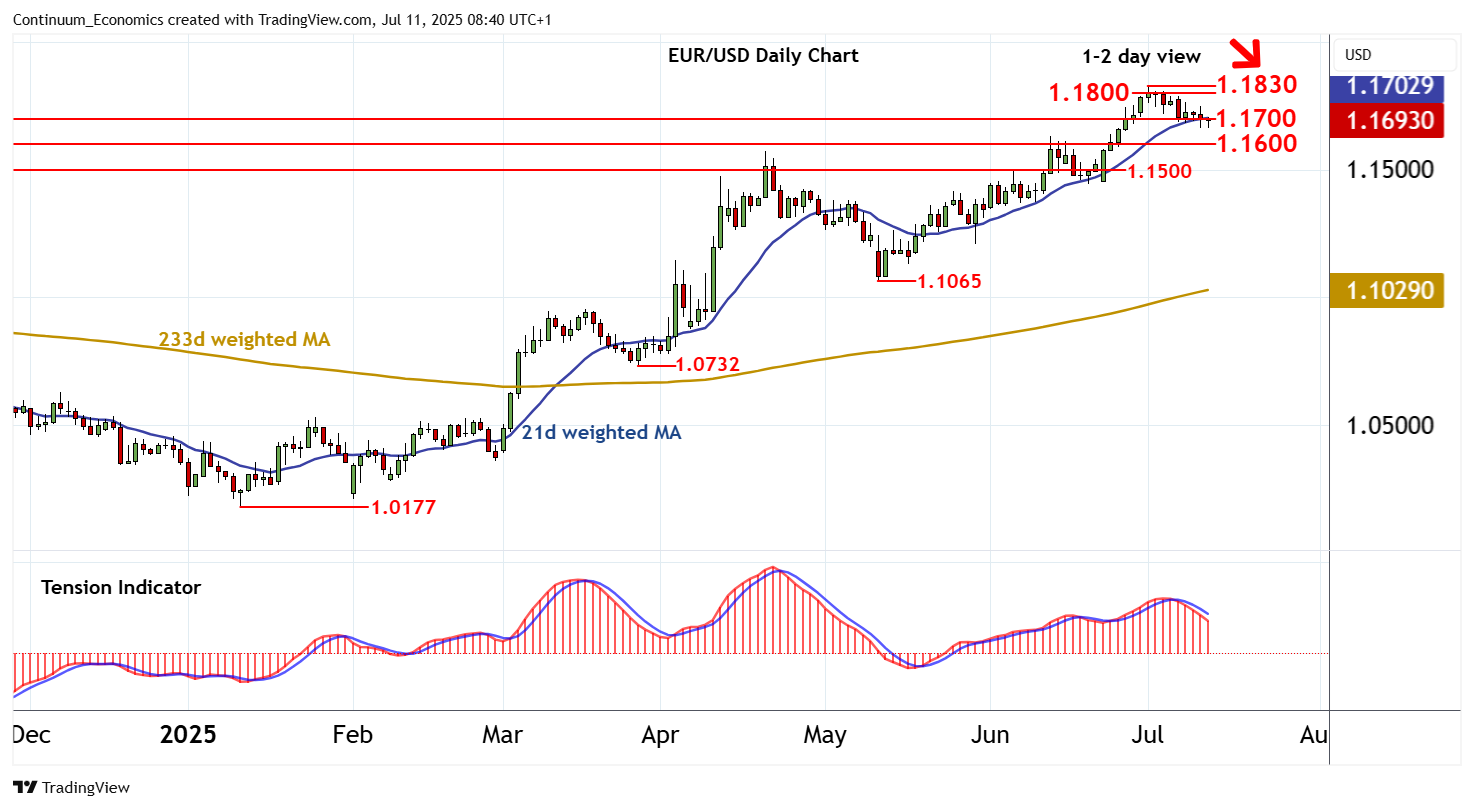FX Daily Strategy: N America, July 11th
GBP at risk from weaker GDP
Hard to justify current CAD levels given relative US/Canada performance
USD looking generally better bid as tariff announcement awaited
GBP at risk from weaker GDP
Hard to justify current CAD levels given relative US/Canada performance
USD looking generally better bid as tariff announcement awaited
EUR/GBP has gained 20 pips after the May GDP data came in at -0.1%, well below the consensus 0.1% gains. However, the weaker May number was offset slightly by an upward revision to the March data to 0.4% from 0.2%, while the April decline of 0.3% was unrevised. This means that the 3m/3m gain was a little stronger than expected at 0.5% in May, but this is somewhat illusory, as the strength is based entirely on Q1 gains. A flat number in June would mean Q2 would likely record 0.1% growth, but the prospects for Q3 would be poor with a weak base in Q2.
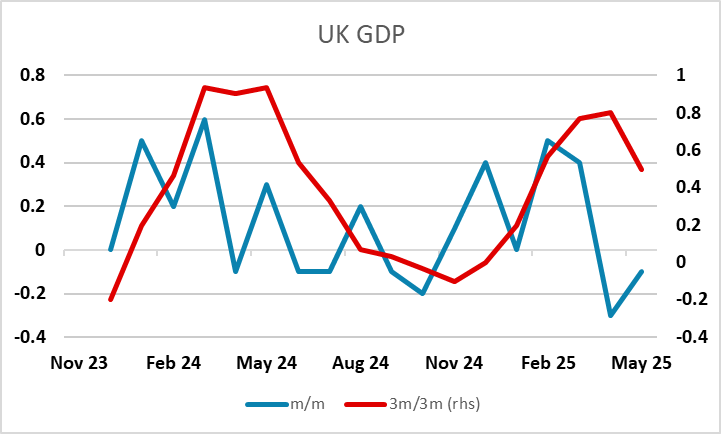
So despite the March revisions, the forward looking prospects for UK GDP are poor, especially since the Budget in the autumn is likely to introduce some fairly major tax increases to deal with the current budget shortfalls. All this means easier monetary policy is likely over the next year. As it stands, there are two rate cuts priced in over the rest of the year, and three by this time next year. The risk looks to be clearly towards the downside, particularly in 2026, so there is scope for declines in UK front end yields from here. Real yields seem likely to converge on Eurozone levels in the next couple of years, suggesting scope for EUR/GBP to move above 0.90, but without major shocks this is still likely to be a slow process.
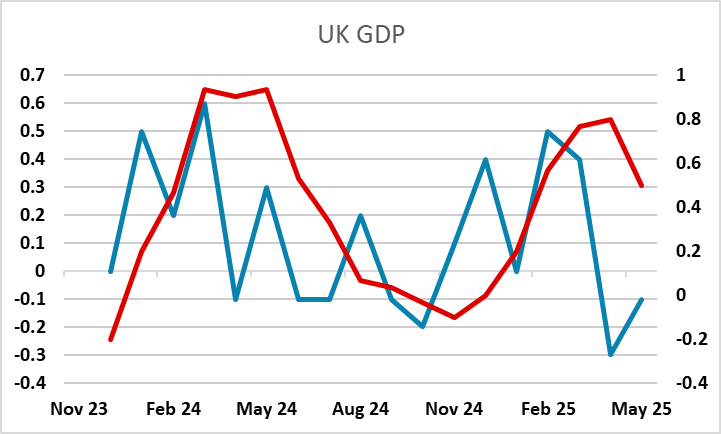
Short term, much will depend on the decision from the Trump administration on tariffs, particularly on the EU. After the overnight announcement of a 35% tariff on imports from Canada overnight, the risk is that a similar number is announced for the EU. While these may all be negotiated away, the risks for the short term may be to the CAD and EUR downside, and this could prevent much of a EUR/GBP gain near term. While the tariff announcement in early April actually led to USD losses, markets now seem more focused on the risks elsewhere and we would expect the USD to perform better in the short run, at least until or unless evidence emerges of damage to the US economy.
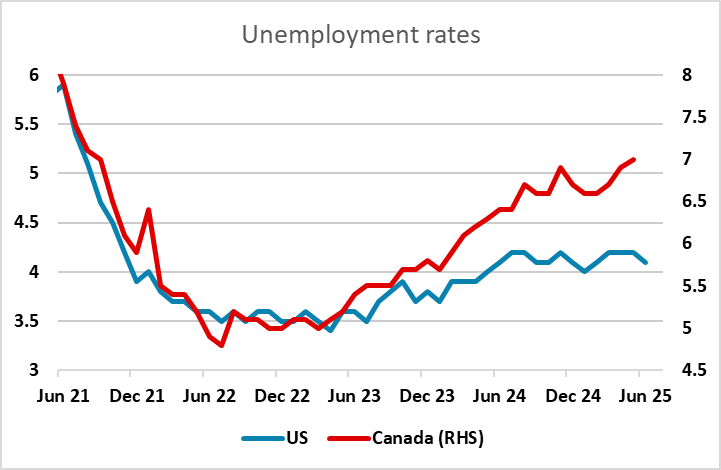
The other main release is the Canadian employment report, with the consensus looking for only a very marginal rise. The underlying trend is now quite flat, with the trend in the unemployment rate clearly higher. Despite this, the CAD has held up well against the USD in recent months, gaining ground along with most other major currencies after the US announcement of reciprocal tariffs in early April. But as the Canadian economy continues to underperform the US, the risk is that we see a reversal of the recent outperformance and a reconnection with yield spreads. The market is currently pricing one more BoC cut and two Fed cuts this year, but given the current evidence on relative economic performance, it seems unlikely that the BoC will cut less than the Fed despite its lower starting point.
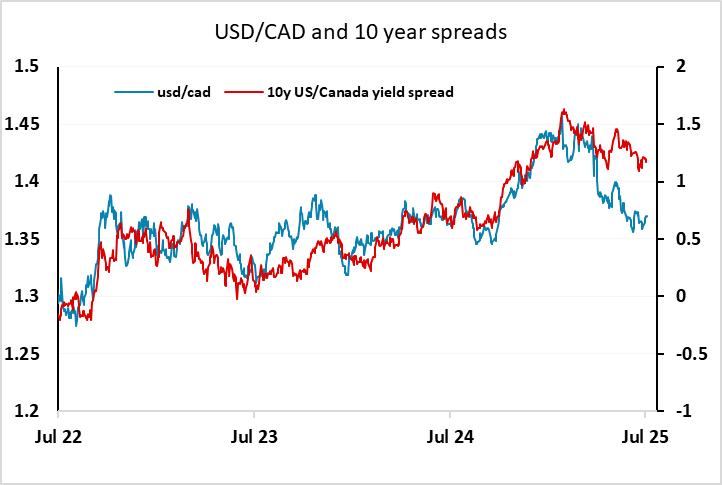
In general, the USD showed a firmer tone on Thursday helped by another dip in the initial claims data. It now looks increasingly like we will see an extended correction to the USD decline we have seen since April, with the European currencies looking the most vulnerable, both because they have made the biggest gains and because they are at most danger from tariff news. Additionally, the current positive view of the European economy may start to be challenged by weaker data in the coming months, as uncertainty around tariffs has seen some weakness in lending growth.
